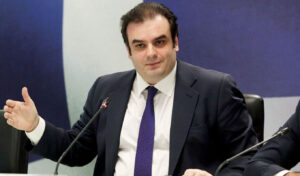Greek tourism continues to be a fundamental pillar of the economy, and 2025 proves its strength once again. What stands out this year is not so much the increase in arrivals – which remained almost unchanged – but the impressive rise in revenue, thanks to a significant increase in average per capita spending. Americans are at the top, while together with Germans they are shaping the new face of high-value tourism. According to data from the Bank of Greece, tourism revenue in the first half of 2025 reached €7.66 billion, marking an 11% increase compared to the same period last year. Arrivals increased by just 0.6%, reaching 11.7 million travelers. This means that the increased receipts did not come from more visitors, but from the fact that travelers spent more: average spending per trip reached €622, up 10.1%.
Read: Taxi strikes: How strikes and van battles bring Athens to tourism impasse and threaten city breaks and tourism revenue
American tourists emerge as the ‘golden customers’ of Greek tourism
American tourists are emerging as the “golden customers” of Greek tourism. Their spending increased dramatically by 29.4%, reaching €704 million in the first half alone. Average spending per trip skyrocketed to €1,015, making them the most generous visitors to set foot in the country. Meanwhile, arrivals from the US increased by 20%, thanks in part to the expansion of direct flights between American cities and Athens. The turn of Americans toward Greece is not accidental. According to the INSETE study, travelers from the US consistently record the highest daily spending among all major markets. These are not simply tourists who come for sea and sun, but visitors who invest in experiences, from luxury hospitality and gastronomy to cultural tours and wellness activities. Alongside the Americans, Germans remain a stable force. Their spending increased by 13.5%, reaching €1.37 billion. Their average spending reached €739, significantly higher than the average. Arrivals recorded a 4.7% increase. British tourists follow with total revenue of €1.08 billion (+7.3%), while their average spending reached €711. The increase in arrivals from the United Kingdom is impressive, reaching 11%. Together with Germans, the British continue to represent over one-third of total revenue.
Canadians and Australians, although numerically fewer, are among the tourists with the highest per capita spending. According to INSETE, Canadians have the highest average spending per trip among all major markets, while Australians stand out for their long stays, which increase the total revenue of destinations. Distance remains an obstacle, but their contribution in terms of “quality demand” is crucial. Among other markets, Italians recorded a 9% increase in revenue (to €344 million), but remain the most “economical” visitors, with average spending of €558. The French, on the contrary, showed a marginal revenue increase of 2.1% (to €455 million), with the second highest average spending (€747), despite a sharp drop in arrivals (-9.8%).
June figures further strengthened the picture. Total revenue increased by 8.8%, despite a 1.7% decrease in travelers. Americans recorded an explosive 64.7% increase in spending, while Germans followed with 18.6%.
Tourism: The majority of revenue continues to concentrate in the third quarter
This picture proves that the strategy of targeting high-spending markets is paying off. However, the big “bet” remains extending the season. The majority of revenue continues to concentrate in the third quarter, putting pressure on infrastructure and destinations. Americans and Canadians, who travel more easily off-peak, can serve as a key to more balanced development. Despite the impressive results, concerns remain. The depreciation of the dollar against the euro creates worry about the dynamics of the American market from 2026 onwards. If the cost of traveling to Europe increases, Greece may suffer a blow to one of its most important markets.
However, the first half of 2025 proves that our country can rely less on volume and more on quality. Americans, Germans and British tourists emerge as the main “lifeline donors” of tourism, while Canadians and Australians add their own distinctive mark. The question is whether the country will leverage this trend to upgrade its tourism product overall and protect it from international disruptions.
Published in Money Pro of Parapolitika




